What’s a fact that no one wants to hear? All toads are technically poisonous. But most toads in the United States produce mild toxins. They have parotid glands posteriorly to their eyes that secrete toxic fluid as a defense. You should wash your hands after handling one, but they can cause more severe reactions in pets. However, Texas is home to one highly toxic toad responsible for irritations and, sometimes, emergency care. Uncover eight poisonous toads in Texas. Plus, find out where they live and if they are dangerous.
1. Cane Toad
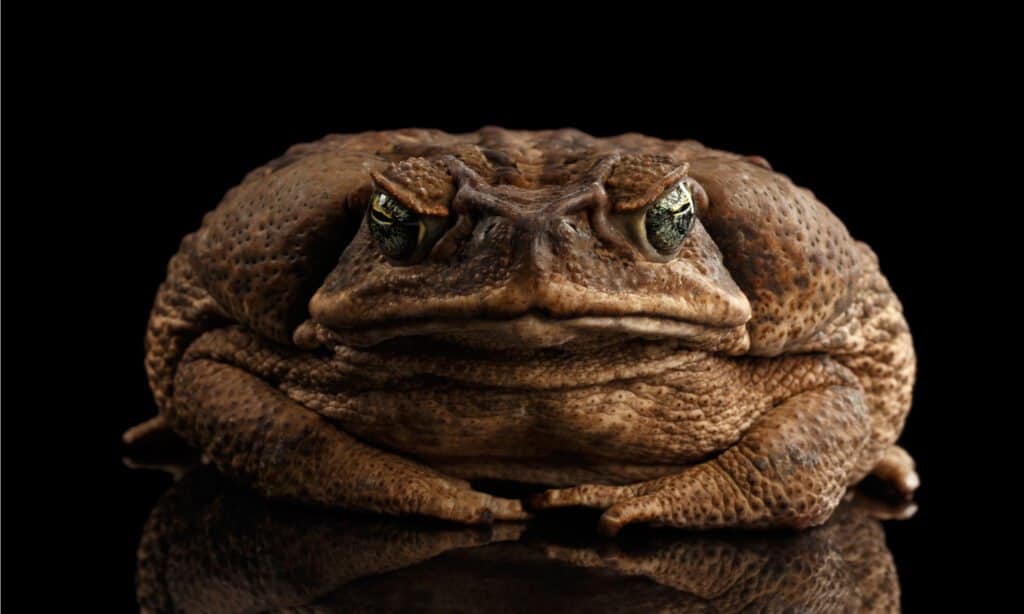
Seregraff/Shutterstock.com
The cane toad is a large, warty amphibian native to South and Central America. South Texas is one of the very few areas in the United States where you will find this dangerous species. Reaching over 9 inches, it is the largest toad in the world. It is an old, true toad that people introduced to many countries in hopes it would control agricultural pests. Today, it is considered one of the worst invasive species on earth. And despite its taste for insects, it did little to curb the world’s bug problem.
Cane toads are excellent at taking over the resources and food of native wildlife due to their highly toxic secretions. Their parotid glands are behind their shoulders and produce a milky substance that can kill many animals, including pets. If the toxin gets into your eyes or mouth, it can lead to severe reactions and, in some cases, fatality. Their natural environments include sand dunes, coastal grasslands, rain forests, and mangroves.
2. American Toad

iStock.com/ttbphoto
American toads are among the most common species in the Eastern United States and Canada, including Northeastern Texas. This species comes in many color variations, including brown, gray, red, olive, or tan, with random dark spots. These warty toads have their parotid glands located behind each eye. Their secretions are not lethal to humans or pets but can cause reactions when ingested.
They occupy terrestrial habitats with plenty of food, shelter, and water. They like moist hiding places near shallow bodies of water free of fish, like temporary ponds. You can often find them in forest settings, but they will also inhabit residential areas with enough leaf litter.
3. Great Plains Toad
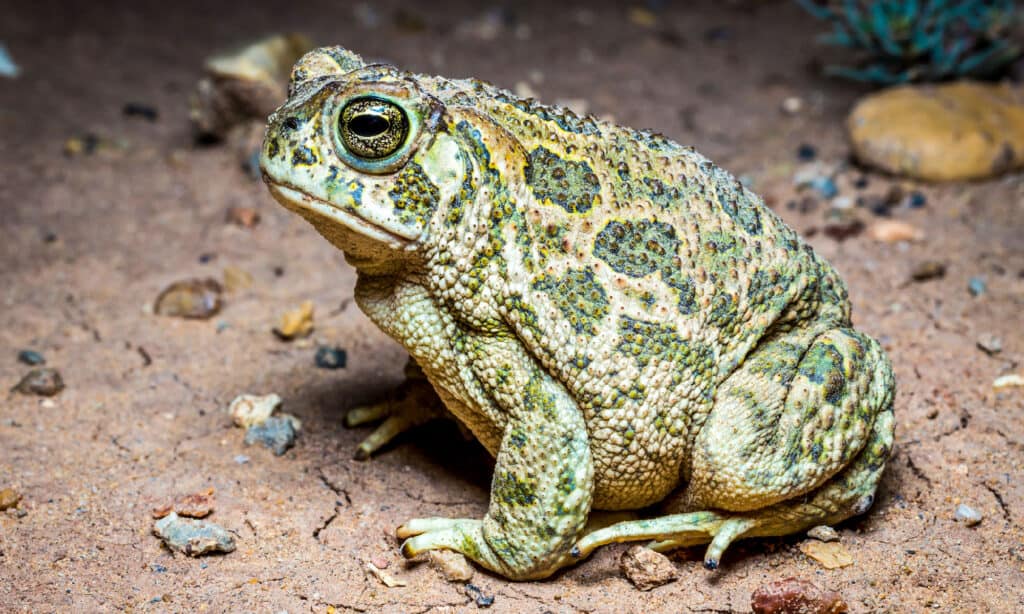
iStock.com/Timothy Cota
The Great Plains toad is a large species native to Central North America, from Central Mexico to Alberta, Canada. You will often find it in the Panhandle Plains and the Trans-Pecos region’s arid landscape. Its habitats are extensive, though, and include floodplains, upland grasslands, rainwater pools, stream valleys, small reservoirs, and rural farms.
Great Plains toads prefer warm, moist conditions (which is when they feed) but will resort to lying dormant under rocks or underground burrows. You won’t commonly find them near human habitations unless you live rurally, and their nocturnal lifestyle keeps them out of the way during the day. Their glands are behind their eyes; the toxin is not harmful to humans but may make pets froth from the mouth.
4. Green Toad
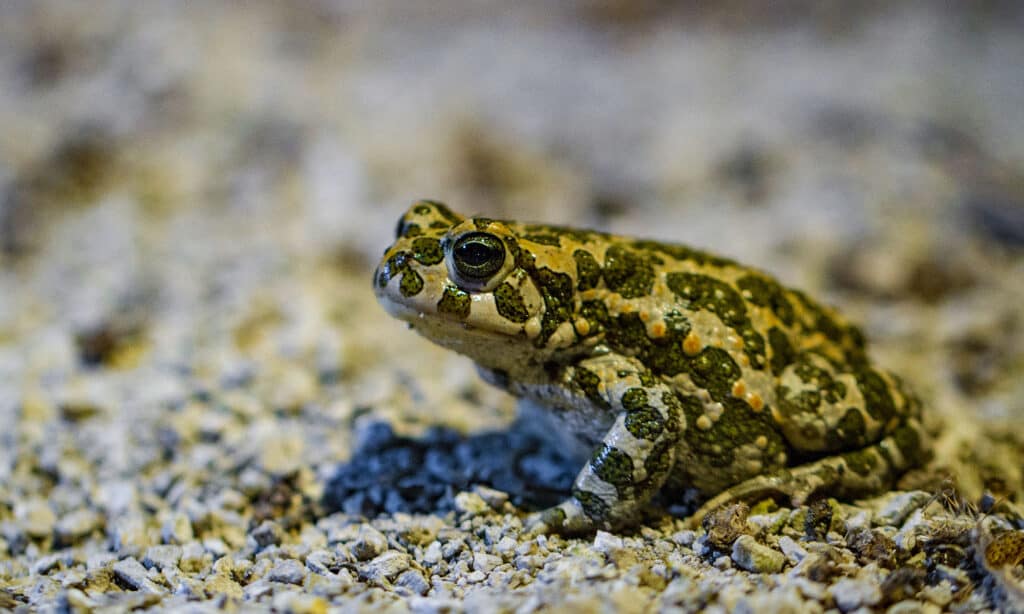
Lillian Tveit/Shutterstock.com
The North American green toad is a small bright green amphibian native to the Southwestern United States and Northern Mexico. You can find this toad in many places throughout the state, but it is typically more common in semi-arid and very dry areas.
This secretive toad is common but hard to spot; you are more likely to see it after periods of heavy rainfall. The summer rainy season is when it is more active and breeding. It, too, is nocturnal and prefers to spend its daytime burrowed underground or hiding under logs.
5. Houston Toad
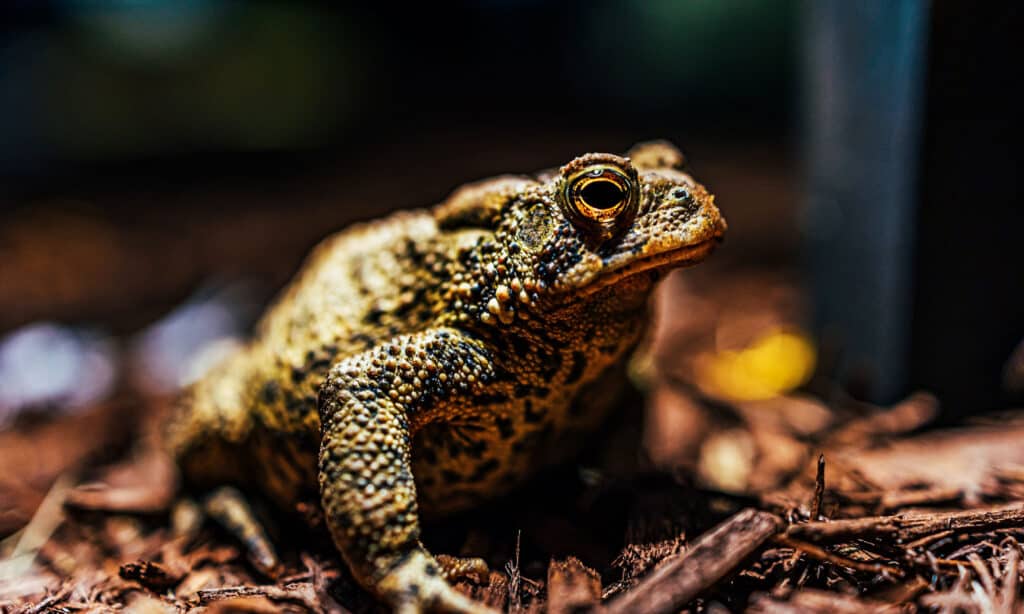
Wirestock Creators/Shutterstock.com
Houston toads are endangered species endemic to Texas, mainly inhabiting a limited geographical area in the Central region (specifically Bastrop County). This once numerous toad species is dwindling to the remaining two thousand.
Their population decline is predominately due to habitat loss, pesticides, and drought. Today, the Houston Zoo has a captive breeding colony, releasing millions of eggs into the wild, hoping to increase their numbers. For their habitats, they prefer loose, deep sand in pine forests and oak woodlands with plenty of canopy cover, native grasses, and still water for breeding.
6. Red-Spotted Toad

iStock.com/Timothy Cota
The red-spotted toad is a small, dry, wart-covered species native to the Southwestern United States and Northwestern Mexico. You can find it throughout much of Texas except for the Eastern quarter. You will often find the red-spotted toad in rocky deserts, open prairies, and grasslands in Texas.
It occupies areas with permanent or semi-permanent water fixtures, either natural or artificial. Its coloration varies from brown, olive, or gray, with numerous small red dots. You are more likely to spot this amphibian near bodies of water in spring and summer during the mating season.
7. Texas Toad
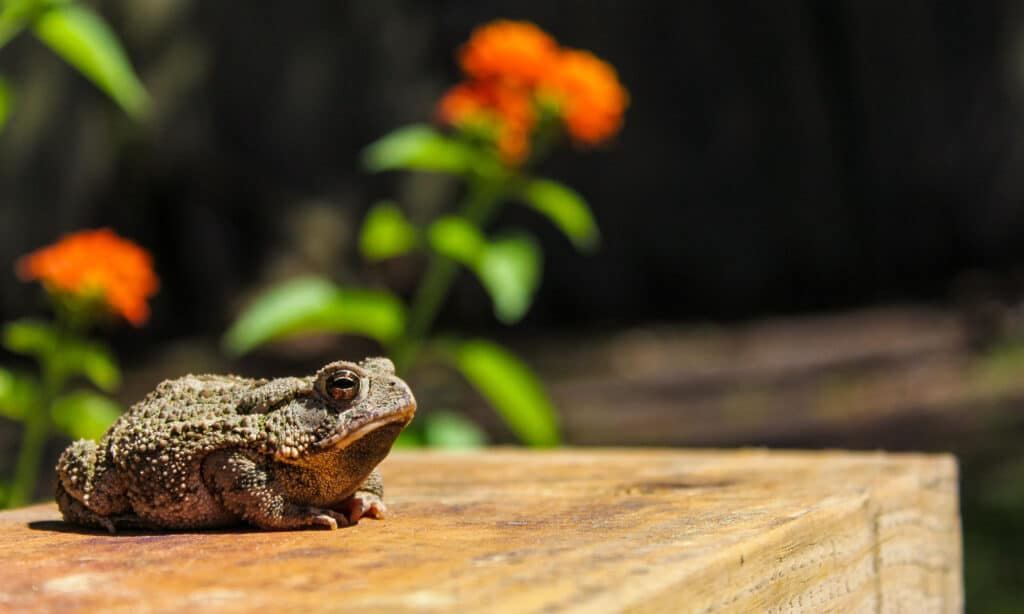
LMPark Photos/Shutterstock.com
Texas toads are medium-sized species native to the Southern United States and Northern Mexico. They are one of the most commonly seen toads in Texas backyards and occur throughout the state except for the far Eastern quarter and the Northwest corner of the Panhandle.
These toads are desert species often spotted on dry grasslands and savannas with open woodlands. Like most toads, they are active after heavy rainfall and spend their days in burrows during prolonged dry weather. Texas toad toxin is not harmful to humans but can cause reactions in pets.
8. Gulf Coast Toad
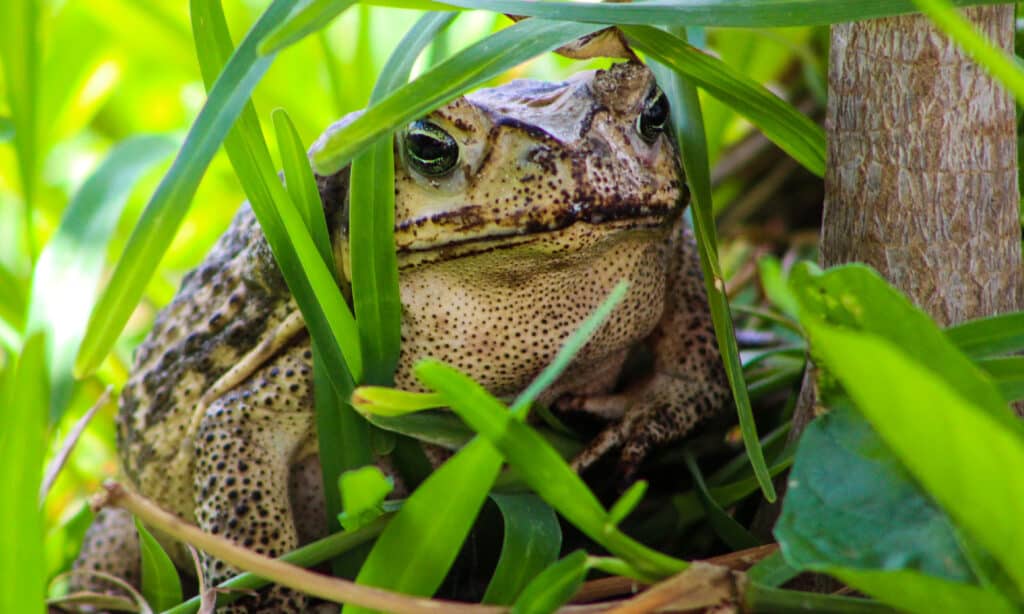
Vanessa Becker-Miller/Shutterstock.com
Gulf Coast toads are native to Mexico and Central America, but they inhabit East and Central Texas areas. They have wide ranges of habitats, from suburban backyards to open grasslands and forests. They travel long distances in search of food but never stray too far from a permanent water source, which they use for breeding. They like to hide under rocks and debris during the day, and in the twilight hours during spring and summer, they will come near the water to call for mates.
Up Next:
- Are Toads Poisonous or Dangerous?
- Meet the Largest Toad in the World
- Toad Vs. Frog: The 6 Key Differences Explained
The post 8 Poisonous Toads in Texas appeared first on AZ Animals.
from Animal News, Facts, Rankings, and More! - AZ Animals https://ift.tt/2olbiGW